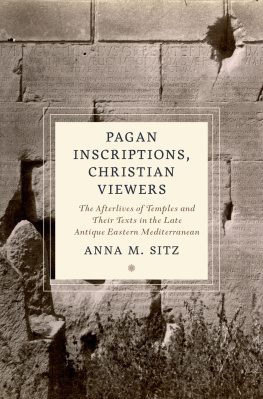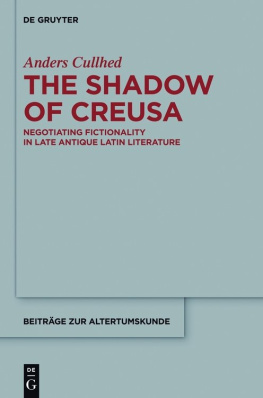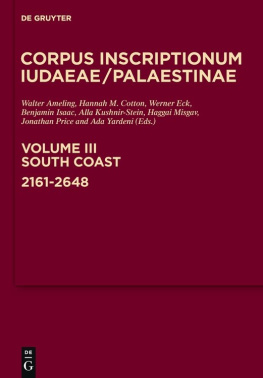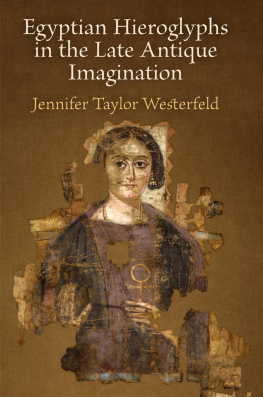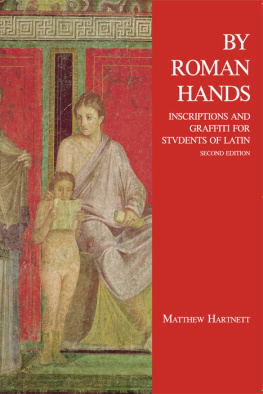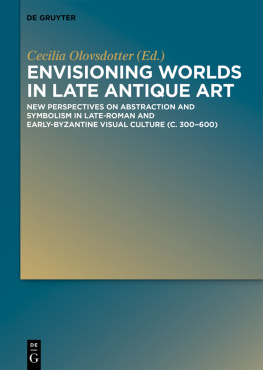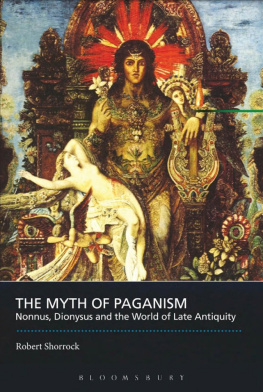Pagan Inscriptions, Christian Viewers
CULTURES OF READING IN THE ANCIENT MEDITERRANEAN
Series Editors
William A. Johnson and Chris Keith
This book series presents a home for original scholarship on the reading cultures of the wider ancient Mediterranean world. Broadly chronologicalfrom the Iron Age to Late Antiquityand geographicalfrom Western Europe to Mesopotamiathe series welcomes new work at the intersection of Classics, papyrology, epigraphy, Jewish Studies, early Christian studies, early Islamic studies, and ancient media culture.
Jeremiah Coogan, Eusebius the Evangelist: Rewriting the Fourfold Gospel in Late Antiquity
Anna M. Sitz, Pagan Inscriptions, Christian Viewers: The Afterlives of Temples and Their Texts in the Late Antique Eastern Mediterranean

Oxford University Press is a department of the University of Oxford. It furthers the Universitys objective of excellence in research, scholarship, and education by publishing worldwide. Oxford is a registered trade mark of Oxford University Press in the UK and certain other countries.
Published in the United States of America by Oxford University Press
198 Madison Avenue, New York, NY 10016, United States of America.
Oxford University Press 2023
All rights reserved. No part of this publication may be reproduced, stored in a retrieval system, or transmitted, in any form or by any means, without the prior permission in writing of Oxford University Press, or as expressly permitted by law, by license, or under terms agreed with the appropriate reproduction rights organization. Inquiries concerning reproduction outside the scope of the above should be sent to the Rights Department, Oxford University Press, at the address above.
You must not circulate this work in any other form and you must impose this same condition on any acquirer.
Library of Congress Cataloging-in-Publication Data
Names: Sitz, Anna M., 1988 author.
Title: Pagan inscriptions, Christian viewers : the afterlives of temples and their texts in
the late antique Eastern Mediterranean / Anna M. Sitz.
Other titles: Writing on the wall Description: New York : Oxford University Press, 2023. |
Series: Cultures of reading in the Ancient Mediterranean | Revision of the authors
thesis (doctoral)University of Pennsylvania, 2017, under the title:
The writing on the wall : inscriptions and memory in the temples of late antique
Greece and Asia Minor. | Includes bibliographical references and index.
Identifiers: LCCN 2022051689 (print) | LCCN 2022051690 (ebook) |
ISBN 9780197666432 (hardback) | ISBN 9780197666456 (epub)
Subjects: LCSH: Architectural inscriptionsMiddle East. |
Christianity and cultureMiddle East. |
Language and cultureMiddle East. | Christianity and other religionsMiddle East. |
Social perceptionMiddle East.
Classification: LCC NA4050.I5 S58 2023 (print) | LCC NA4050.I5 (ebook) |
DDC 729/.19093dc23/eng/20221125
LC record available at https://lccn.loc.gov/2022051689
LC ebook record available at https://lccn.loc.gov/2022051690
DOI: 10.1093/oso/9780197666432.001.0001
To my family
So Paul, standing in the midst of the Areopagus, said: Men of Athens, I perceive that in every way you are very religious. For as I passed along and observed the objects of your worship, I found also an altar with this inscription: To the unknown god. What therefore you worship as unknown, this I proclaim to you.
Acts 17:2223, English Standard Version
Contents
Why are the famous Parthenon marbles currently sitting in the British Museum? Because of Lord Elgin, of course. But Elgin could only take down the pedimental statues and reliefs from the Parthenon because they were still in place up to his time: because a series of decisions had been made centuries earlier. In late antiquitysometimes called the early Christian periodthe decision was made not to remove or edit much of the figural imagery of this pagan temple at the heart of Athens, even when it became a church in approximately the seventh century, nor to dismantle the temple completely. The Parthenon is often lauded as a remarkable instance of the tolerance of early Christians toward ancient statuary, although some figural reliefs were chiseled away (at an uncertain time). In sanctuaries and cities throughout the late Roman empire, the relationship of Christians to older carved figural images can perhaps best be described as its complicated. Some statues were destroyed or edited even as others were preserved in place or sought out as desirable elementsand these decisions were informed by the discourses on statuary taking place in the literature and homilies of the day.
Marble statues were not the only elements of the ancient world to remain prominent in our period. For decades, scholars of late antiquity have attempted to document and understand the enduring value of the classical past in this new era of Christianization. They have pinpointed the ways that ancient Greek and Roman myths, oratory, histories, and poetry inflected Christian texts and thought-worlds. St. Jerome (c. 342420) may have claimed to give up Cicero for Christ (Ep. 22), but his writings remained permeated with classical rhetoricand he could not resist praising the pious Christian Paula for her ancestry leading back to the Gracchi, to the Scipiones, and even to Agamemnon himself (Ep. 108). The most famous Greek poet of all, Homer, was still read, emulated, adapted, annotated, and illustrated in our period; St. Basil of Caesarea (330379) encouraged his students to seek virtue in the verses or sayings attributed to Homer, Hesiod, and Solon (Ad adulescentes). Herodotos tale of Kroisos and the oracle at Delphi appears in the proem of the fifth-century Miracles of St. Thekla as a foil for the more reliable (and less tricky) wisdom of the Christian saint. Prokopios literary style in the sixth century is founded on the tradition of classicizing histories stretching back to the same Herodotos and to Thucydides. He claimed that the late antique population of Rome took great care of their classical patrimonyeven keeping the ancient ship of Aeneas on view. Meanwhile, at Gerasa in Jordan, a Christian priest bearing the name Aeneas put up an inscription that quoted from the Iliad, but at the same time denigrated the pagan rituals that had formerly taken place at the site of his church. Late antique pagan intellectualswho came to be called Hellenes (Greeks or pagans) by their Christian contemporarieslikewise built upon and grappled with the ideas of ancient poets and philosophers.
Not only in the discursive sphere, but in the physical one as well, late antique individuals made the decision to keep monuments of the classical past front and center in cities and landscapes. Older buildings with their classical faades continued to stand and be maintained throughout the empire. Greek and Roman architectural marbles from disassembled or destroyed buildings were repurposed in new structures as spolia. Objects both elite, such as the mid-fourth-century silver Projecta casket bearing an image of Aphrodite, and banal, such as wine flasks emblazoned with Dionysos, drew on classical iconography. Some ancient deities, such as river gods and winged Victory, were relegated to the realm of personifications and continued to appear in explicitly Christian art for centuries.

